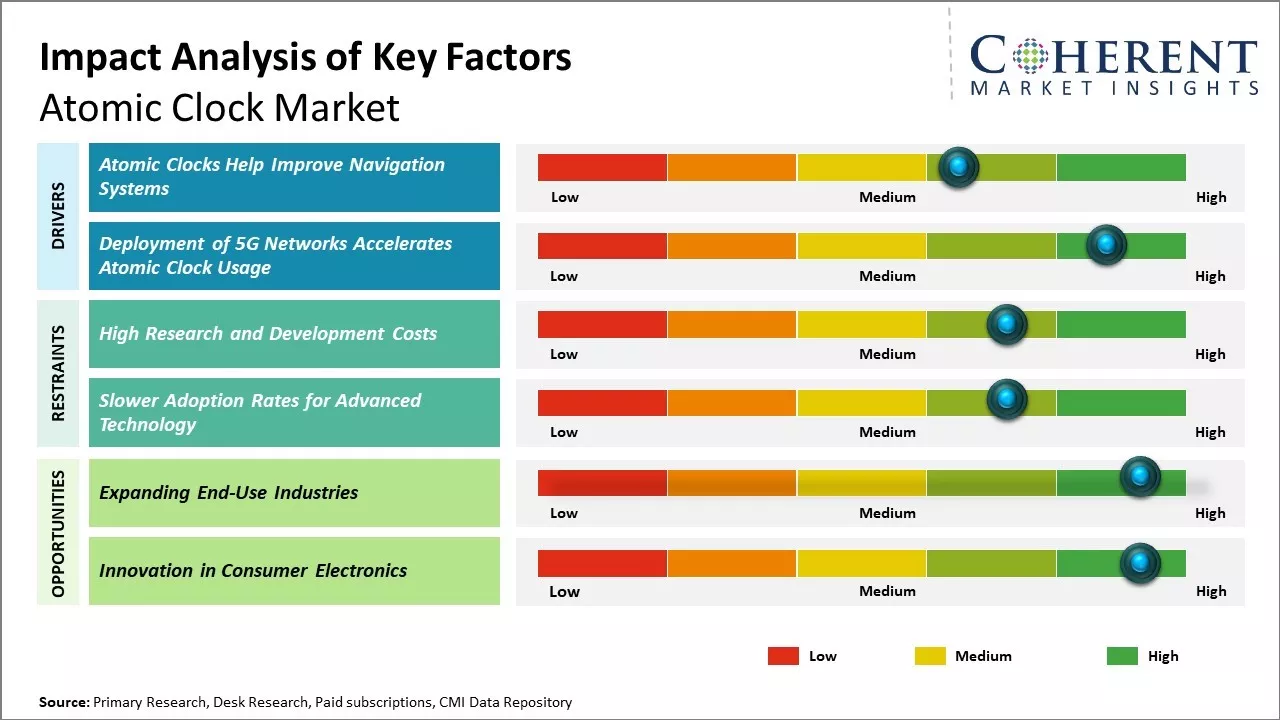The atomic clock market is estimated to be valued at USD 542.3 Million in 2025 and is expected to reach USD 843.2 Million by 2032, growing at a compound annual growth rate (CAGR) of 6.5% from 2025 to 2032.

To learn more about this report, Request sample copy
The atomic clock market is expected to witness a positive growth trend over the forecast period. Growing demand from various industries such as telecommunications, banking & finance, and scientific research & development is expected to drive the market growth. Atomic clocks play a crucial role in fields such as timing & frequency standards, navigation systems, Very Long Baseline Interferometry (VLBI), and Deep Space Network (DSN). In addition, the development of miniature atomic clocks and chip-scale atomic clocks for use in portable devices and Internet of Things (IoT) networks is anticipated to offer new revenue opportunities for players operating in the atomic clock market during the forecast timeframe.
Atomic Clocks Help Improve Navigation Systems
The demand for highly accurate navigation systems is increasing all over the world. From basic GPS in smartphones to advanced guided missile systems, navigation relies on precise timekeeping. Atomic clocks play a vital role in ensuring navigation systems can pinpoint locations within centimeters. Their extreme accuracy helps maps, offers traffic information, and enables other location-based services to function smoothly. As more critical infrastructure and transportation comes to depend on satellite navigation, so does the need grow for rock-solid timekeeping. Atomic clocks are unmatched in their ability to keep time with nanosecond precision across decades. This reliability factor is essential in applications like aircraft landings and autonomous vehicles.
For instance, in February 2022, physicists from the University of Wisconsin–Madison recently unveiled one of the most advanced atomic clocks to date. This innovative device, referred to as an optical lattice atomic clock, showcases remarkable precision, capable of discerning time differences to the extent of losing merely one second every 300 billion years. Notably, it represents the inaugural instance of a "multiplexed" optical clock, accommodating six distinct clocks within the same framework. This unique design empowers the research team to explore avenues for detecting gravitational waves, probing for dark matter, and uncovering novel insights into the realm of physics through the utilization of clocks.
Joining thousands of companies around the world committed to making the Excellent Business Solutions.
View All Our Clients